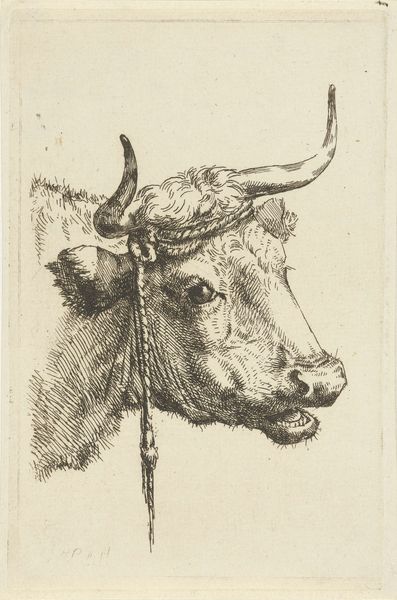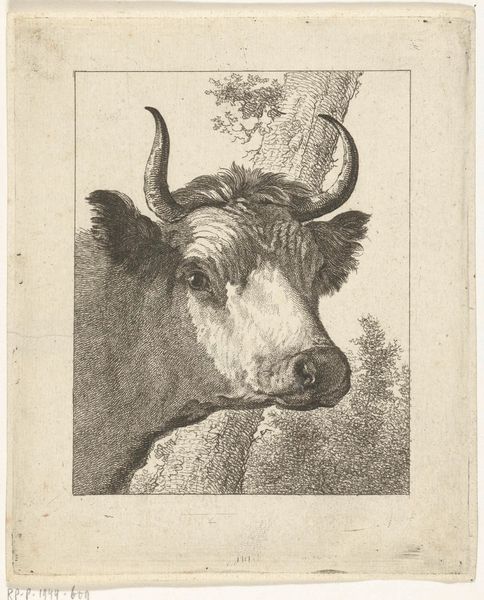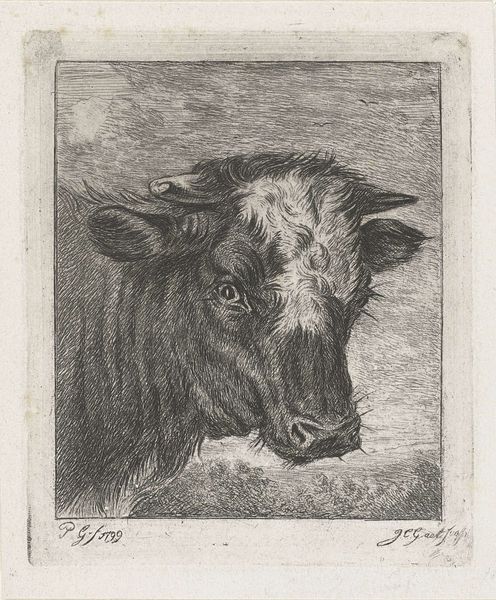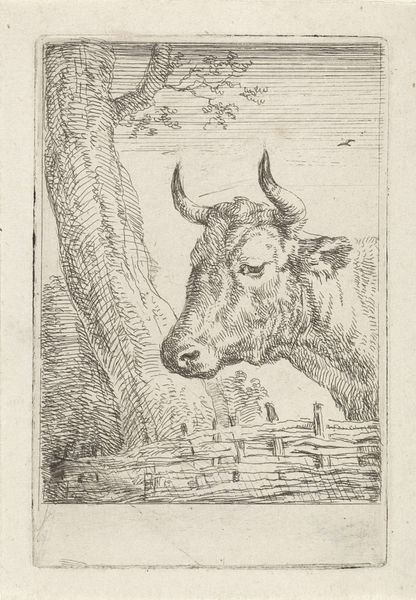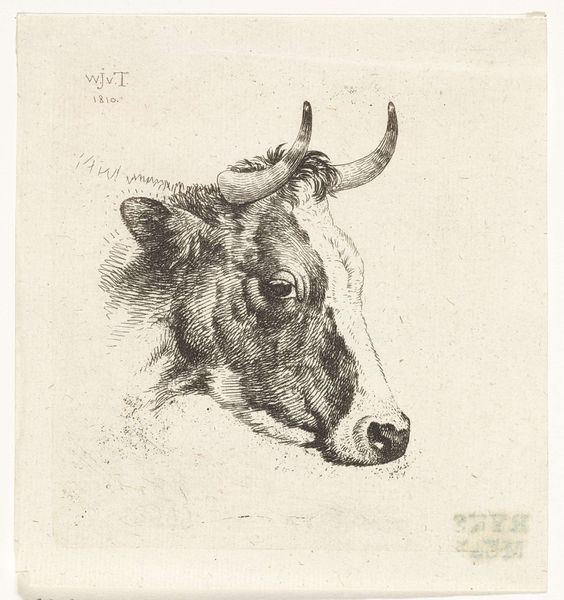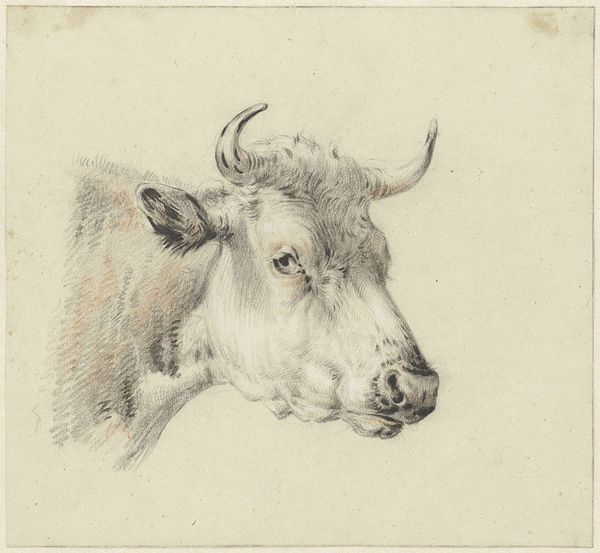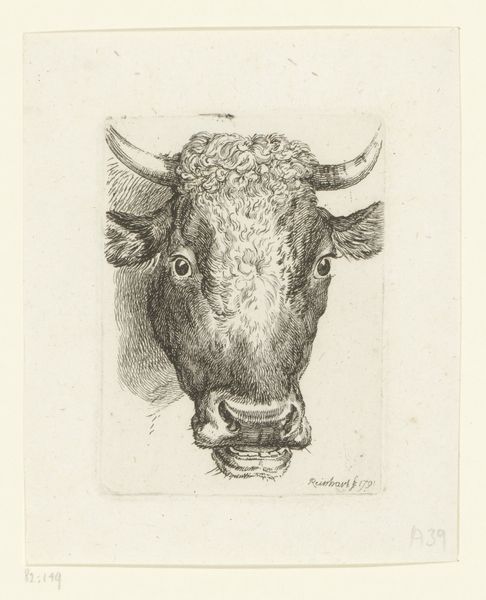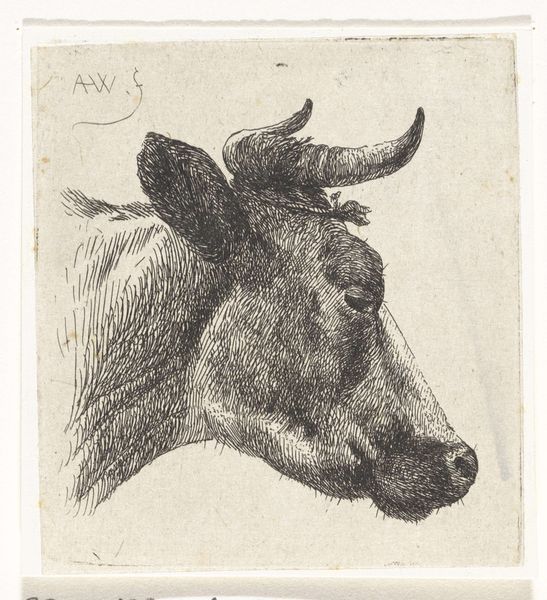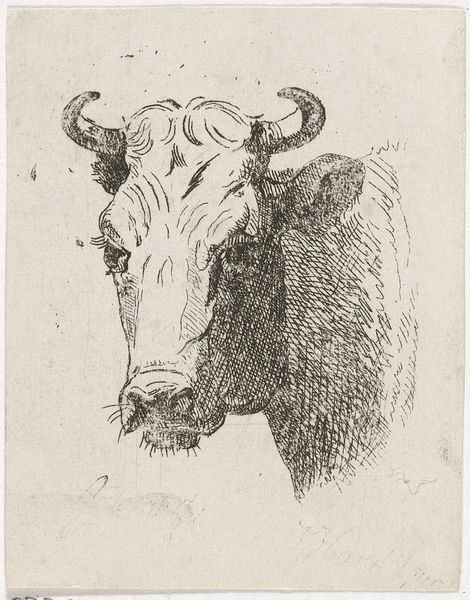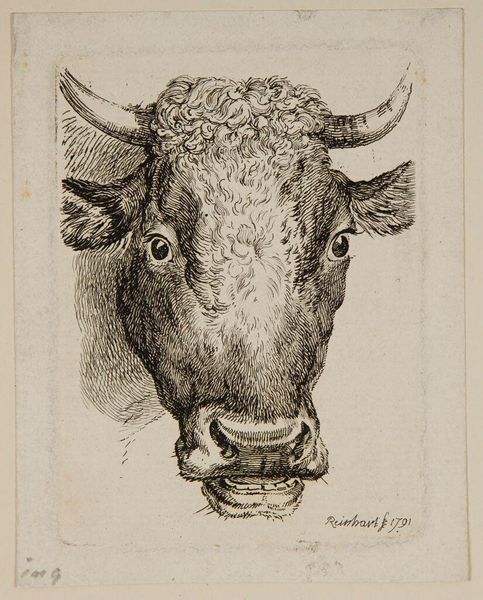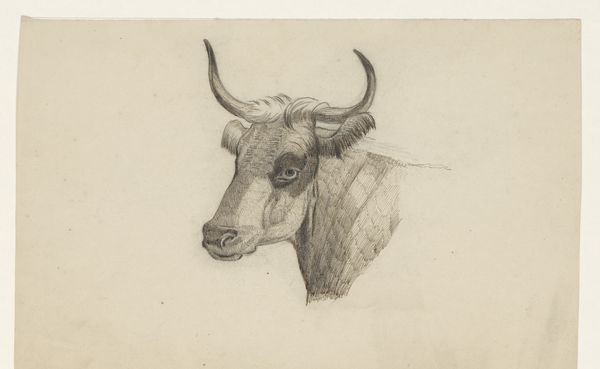
print, etching
#
portrait
# print
#
etching
#
old engraving style
#
realism
Dimensions: height 140 mm, width 125 mm
Copyright: Rijks Museum: Open Domain
Curator: We’re looking at "Head of a Cow with Rope Around the Horns", etched in 1854 by Jacobus Cornelis Gaal. It’s currently part of the Rijksmuseum collection. What strikes you first about this image? Editor: That gaze... direct and soulful. There’s a stoicism there, an awareness beyond the animal. The monochrome only adds to the intensity, all those dark, deliberate lines defining form. And the scale; it makes you wonder about its place, in relation to you. Curator: Well, thinking of etchings in that era, it would likely have been more for the portfolio or the collector's cabinet than the wall. Etching was, after all, a really vital mode for disseminating images before mass photography took over, providing accessible, reproducible art. Gaal here uses it beautifully to show detail, which speaks to his observation of nature. Look closely at how the different areas are shaded: you can sense the texture of the cow's coat. Editor: True, you feel the presence, but it goes further. To me it makes visible the animal as product and commodity: its horns roped. In other prints and portraits of this time the animal serves a purpose and role within society. I am drawn to the social history implicated in those simple lines and tonal gradations, from fields to markets, and how deeply etched such exploitation can be in these pastoral visions. I wonder if the purpose in making a picture could ever, by necessity, differ from such a commercial transaction. Curator: I appreciate that analysis. To me, looking at Gaal's technique, I can see a kind of reverence that extends past mere reproduction, it suggests the desire to really know and represent its essence and being. I feel transported and asked, what can we discover of what it might *feel* like? It is a paradox isn't it, because what you are describing too, is what contributes towards its making into commodity - something so familiar as an agricultural animal that one no longer notices what beauty, soul, complexity of being, exists right there. It brings up questions about exploitation - even within its very representation. It’s rather touching, in a melancholy kind of way, because how many other people gave this animal such close observation in its existence? Editor: An existentially loaded cow print—who would have thought! I have to say, I come away appreciating both Gaal’s technique, his rendering of material substance *and* that lingering sadness, in our looking at this creature today.
Comments
No comments
Be the first to comment and join the conversation on the ultimate creative platform.
